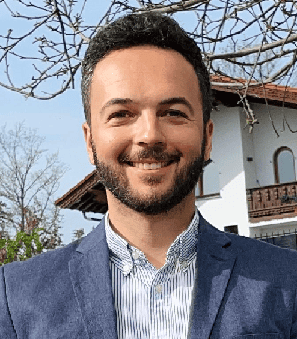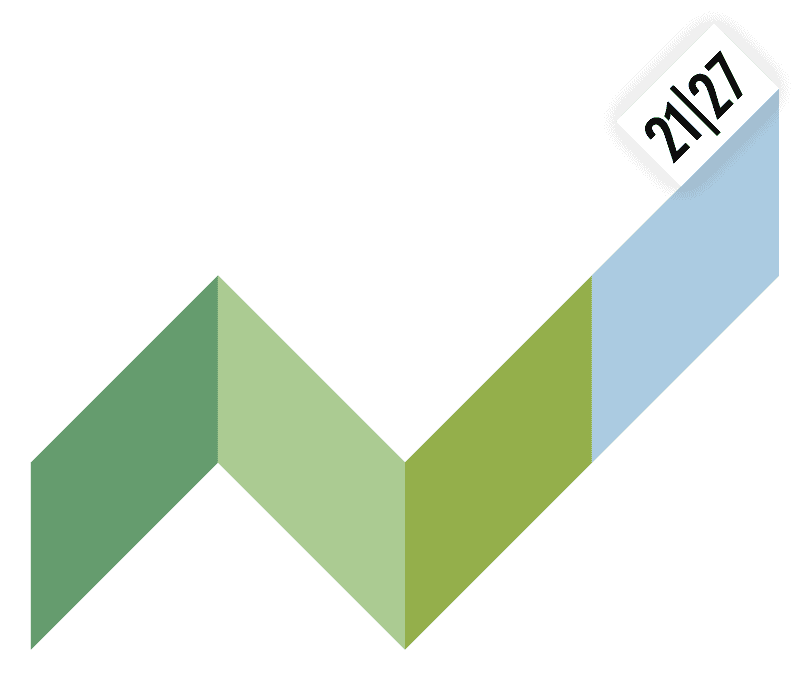In this interview, we sat down with Sofiane Bekkal, the sustainability leader for the ‘Home and Distribution’ division in the Europe Region at Schneider Electric. With a global workforce exceeding 160,000 employees, Schneider Electric stands as a pioneer in digital transformation, energy management, and automation solutions.
How would you introduce your company to someone who isn’t well familiar with it yet?
Schneider Electric provides energy and automation/digital solutions for efficiency and sustainability to our customers, with a strong focus on innovation. We offer not only products but also software, solutions, and services, aimed at helping customers manage their energy and processes more efficiently. We aim to make energy available, safe, reliable, efficient, and sustainable for all.
What are your future perspectives?
We strive to accelerate the reduction of CO2 emissions, be more efficient with resources, and embrace sustainable business practices. We have validated SBTi net-zero targets with concrete milestones to reach carbon-neutral operations by 2025, net-zero CO2 emissions in our operations by 2030, carbon-neutral across our value chain by 2040, and net-zero end-to-end by 2050.
What does sustainability mean for your company and the circular economy, especially?
Sustainability is part of our DNA at Schneider Electric. It has been a focus for many years. We place decarbonation and circularity at the core, considering the full production and supply chain. To do so, we are deploying an eco-design mindset and methodology in our organization globally.
Do you know the Schneider Sustainability Impact 2021-2025 Program? It’s a set of corporate commitments aligned with the United Nations Sustainable Development Goals, articulated around six pillars: Climate, Resources, Trusted, Equal Opportunity, Empowerment of Generation, and Empowerment of Local Communities. If you want to know more, I invite you to consult our website where you can find all our commitments.
What materials do you use in your products? And how do you ensure that they are safe for human and environmental health?
Our offers are made of plastic, mainly thermoplastic, brass, steel, aluminum, copper, and electronic components. The primary function of our products is to ensure electrical safety, whether they are designed for homes or buildings. In the Home and Distribution division, it’s crucial, even vital, that our products comply with the highest standards of regulation in terms of safety. For example, the plastic used must maintain a certain level of flame retardancy. During endurance tests, we ensure that the plastic does not melt before temperatures reach 850 degrees, and in some cases, even 960 degrees. We have started to transform our value chain to increase sustainable material in our products to 50% by the end of 2025 and reach 100% of our packaging free from single-use plastics and using recycled cardboards.
Can you describe your product life cycle and how you ensure that your products are completely reusable and recyclable?
To simplify the flow, after resource extraction, components are transformed, delivered to manufacturing facilities, assembled, packed, shipped to distribution centers, and then delivered to customers. At the end of the product life, most of the products are shredded, and components which cannot be regenerated will be incinerated or landfilled. We strive to change from linear to circular flow. That’s why we are launching an end-to-end circularity journey in the entire Schneider organization. We aim to define a circular path for different categories of products, following our new program ‘BLA’: Use Better, Use Longer, Use Again. We are deploying design for recyclability guidelines in project teams with mandatory requirements beyond regulations.
How do you ensure that your manufacturing processes are environmentally sustainable and have minimal impact on the environment? Can you provide an example of how you have closed the loop in your production processes and turned waste into a resource?
We focus on product, material, and architecture, considering the full value chain. For example, in our factories where production and assembly take place, we are using renewable sources of energy and our own energy management system, which is the solution we provide to our customers. We are also active in take-back programs mainly in Europe. Sone examples in France, Netherlands, and Denmark. We launched a resilience program to secure the supply chain of some of our materials. We already regrind as much as possible the sprue of our molding processes. We even plan to be more ambitious, for example, through a closed-loop initiative taking place in France for silver. Today, silver-based production waste in our plant is sent to a nearby recycler for regeneration, and then we use it again in our production process. We want to duplicate such closed-loop success worldwide.
Have you received any certification for your C2C practices, such as Cradle to Cradle certification or other sustainability certifications?
Yes, we obtained a C2C certificate in our wiring device portfolio on different offers in Europe. We have been the first in our market to have reached the silver level for wiring devices functions. Being certified C2C is a trusted 3rd part recognition for building and residential segment, and it is getting more and more traction in Europe. For example, a home builder in France called Maison d’Arianne created the first French C2C house and selected us as a partner for the electrical distribution material.
How do you engage with your customers and stakeholders to promote awareness and understanding of your C2C approach?
We have created personalized brochures that explain how our certified products rate across various sustainability performance categories and their impact and relevance for both the planet and business. We have even created a short animation movie added to our digital channels to visually illustrate how those award products are making a positive impact for our planet.
How do you work with your suppliers and partners to ensure that they also meet the C2C standards?
We request our suppliers to guarantee the integration of recycled content, mainly in our plastic and metal as much as possible. We also request alignment in the social pillar by following code of conducts and certifications.
What are the success criteria for a sustainable business model?
From my perspective, we should continue to limit our environmental impact through energy-efficient solutions, offering renewable energy options, and promoting sustainable operation across the full value chain. Then, we should keep focusing on customer value, delivering innovative products and services that help customers achieve their sustainability goals.
Interview was conducted by Roxane Girard and Adrien Simon from Polymeris, France.



